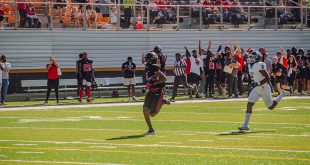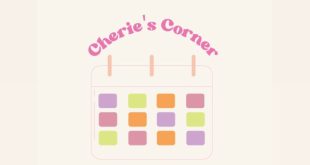“America is a country which produces citizens who will cross the ocean to fight for democracy but won’t cross the street to vote.”
This is a quote from 1970s Kansas City Star Columnist William E. Vaughn in reference to voter apathy in this country.
September is National Voter Registration month, yet many college students, members of an underrepresented voting population, are unaware of that fact.
“Yeah, I had no idea it was national voter registration month,” Karley Brown, a junior education major, said. “Voting or elections haven’t really been talked about or anything. People have other things on their mind.”
This has been a hot button issue for years. According to the Bipartisan Policy Center, by the time the presidential election came around in 1996, only 49 percent of eligible voters turned out to participate. This was not even counting the 30 percent of the population that were not even registered.
In an effort to combat this level of indifference, the Higher Education Act of 1965 was reauthorized in 1998 to include a requirement that colleges make a “good faith effort” to make voter registration forms available to all enrolled college level students.
VSU would be no exception to that rule. Our own Office of Student Life has a headquarters dedicated to registering students to vote located in the third floor of the Student Union. They also freely provide online resources to make the process easier.
This seems to have worked on a national level: 12 years later for the historical 2008 election, voter turnout for all eligible voters increased by 13.3 percent.
However, the downward trend would pick back up in 2012, where national turn-out would drop by 4.8 percent. The controversial 2016 election would only slightly kick the turnout back up towards 2008 numbers.
The state of Georgia has not done any better, despite government initiative.
According to the government website for Georgia elections, for their 6.1 million registered active voters, only 19 percent of those people participated in the primary ballot for governor this year and only 10 percent of them shared in the Republican runoff for this July. The demographics for minorities and the 18-29 demographic are especially low.
Keep in mind, even with the higher numbers in the 2000s, the national voter turnout is only barely hitting the majority and the state level in Georgia is only getting a fraction of the population.
Why such low numbers?
There has been an increased emphasis on registration and elections seen in the Rock the Vote movement in 2008 and the media firestorm surrounding Donald Trump’s 2016 campaign and
eventual win. There is a government initiative for voter registration drives. Still, only about half of the active voting population in the nation votes for the president and usually only about 15 percent of Georgia’s population votes for the state’s representatives.
Even popular social media sites like Snapchat have been promoting voter registration.
Based on the stats and increased focused on voting, registering is not the problem, just a symptom of it. One possible explanation is disappointment, which can lead to apathy.
“I mean it don’t really make a difference,” Zeek Menefee, a freshman mass media major, said.
He does have evidence to support that theory. In 2016, Hilary Clinton had the popular vote of 65,845,063, and Trump had the vote of 62,980,160. But electing a president into office is not entirely about the popular vote.
“The point still stands: we don’t get what we want,” Menefee said. “The majority spoke.”
Some just believe choosing elected officials is such a cumbersome decision and would rather pass the buck.
“These are the people who will be affecting your future,” Brown said. “It’d be awful to mess that up.”
Another reason is that voting is not compulsory. Many people either do not want to take time out of their busy schedule to come down and vote or simply do not want to vote at all.
Plus, there is the lack of access to polling stations in poorer and rural neighborhoods, potentially leading to marginalizing said populations.
That, combined with what many perceive to be a corrupt political system, will drive down turnout numbers on all levels.
While voting and national confidence is at a low at this point in time, will it recover?
If we pay attention to history and stats, the number still probably will not take up an overwhelming majority. The last time the percentage was in the high 60s was 1968.
Even in the previous national election, the turnout’s percentage was only about 59.7, and that was most likely because of all the controversy.
So, the number of voters probably will not significantly change overtime outside of the core people who already do. To prevent further disappointment, it would be advisable for that population to actually research all potential candidates before making their decision.
Story by Malia Thomas, Staff Writer.
For more News, click here
 The Spectator The independent student newspaper of Valdosta State University
The Spectator The independent student newspaper of Valdosta State University





